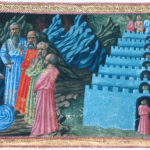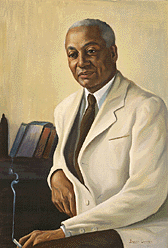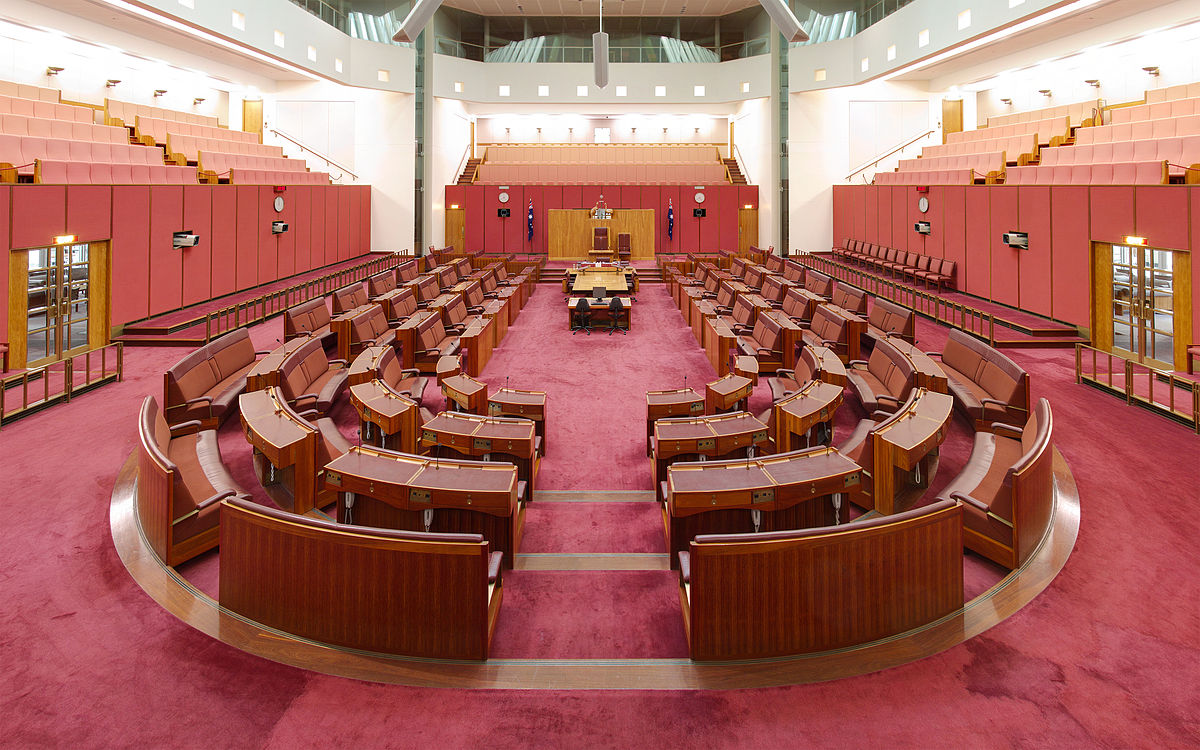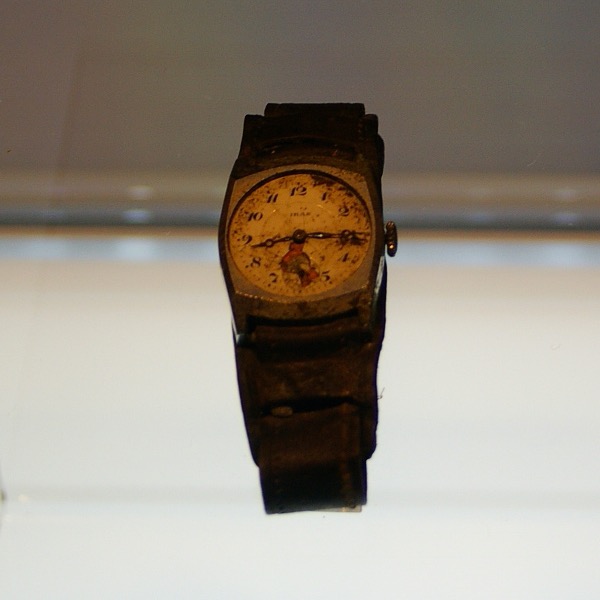
Hiroshima
An old eucalyptus tree grows in the ruins of Hiroshima Castle. Although only 750 metres from ground zero when the atomic bomb was dropped on Hiroshima at 8.15 am on 6 August 1945, the eucalyptus tree survived and still lives. All around it for miles about was destroyed.
Warfare has not been central to the discussion that has unfolded on this site, but it cannot be ignored. It is only foreigners or rebels that we kill in war. To label someone a foreigner is potentiality or in reality a licence to deprive them of life in “the national interest”. Moreover the logic of war provides a licence to deprive our own citizens of life in “the national interest”.
Borders and warfare are intimately intertwined. The nation-state is, in the ultimate analysis, the outcome and juridical white-washing of acts of mass murder which create or maintain the state and are sanctified by virtue of victory and effective control of communication. The “nation”: the mythic sibling of the state – is sometimes manufactured after the event to conform to new political and military realities.
“History”, it has been said, “is the autobiography of a madman”. This is nowhere more true than in respect of the history of warfare; with the deepest insanity being reached in the 20th century with its doctrines and practice of total war. Against this background it is a bold claim to assert that warfare may be worsening again in our own times: but the rising numbers of refugees tell us (if we cannot place reliance on war talk in contemporary press) that warfare is making a return.
Hiroshima for 70 years stood as a reminder to Japan and the world of the costs and insanity of warfare. In recent days the peace constitution of Japan which prohibited Japan from involvement in war, has been reinterpreted as consistent with collective self-defence – loosening ever so slightly a salutary control against war. This development comes against the background of nationalist posturing by Japan and China over disputed islands. In the Ukraine an irredentist war has continued to sputter along claiming and ruining an increasing number of lives. Syria and Iraq have succumbed to a chain reaction of violence that is reducing both countries to rubble with no clear end point yet in sight and giving rise to increasingly violent ideologies that find fertile ground in human conflict. The harvest of the Arab spring has been bitter disappointment and the seeds of future violence have been sown. In South Sudan partition has been followed by civil war.
Militarism – which we might define as the domination and suppression of civil society and instincts of peace – and the triumph of ‘warlords’ in society are at play in some of these conflicts. Such militarism dominated the first half of the twentieth century.
Hiroshima is a microcosm of the world in this respect. It came into being when local warlords built a castle to defend their power and domination over others. Around this nucleus grew up a city that by the early twentieth century had a vibrant civilian population while also hosting an imperial headquarters and serving as the military launching point for Japanese forays into Korea, Manchuria and China. During World War II the lives of Hiroshima’s citizens were increasingly dominated by the demands of war. Among the city’s inhabitants were Korean and Chinese conscripted labourers involuntarily participating in the war effort.
Thousands disappeared as ash when the bomb fell.
While most westerners are well familiar with the rise of militarism in Germany and Italy; the course of events that sent Japan in the same direction are less well-known. In Japan’s case civilian government was undermined by a military sub-culture that assassinated civilian leaders, fomented rebellions and ultimately led to the collapse of civil government allowing the warlords to pursue their ambitions of conquest on the Asian mainland.
Also not well-known in the west are some aspects of the process of western decision making that led to the atomic bomb being dropped on Hiroshima. The dominant received narrative that is offered to justify the murder of up to 200,000 citizens of Hiroshima is that of ‘necessity’. Necessary to bring about an end to the war and ‘save lives’.
The reality is perhaps more complex. Human motivation is never simple.
It seems to have been easier to contemplate the use of such a weapon on the Japanese rather than the Germans: although both nations had been subjected to carpet bombing of cities in every respect equal to the devastation of atomic weapons.
On 18 September 1944 Franklin Roosevelt and Winston Churchill discussed the atomic bomb: code named ‘Tube Alloys’. “but when a “bomb” is finally available, it will perhaps, after mature consideration, be used against the Japanese, who should be warned that this bombardment will be repeated until they surrender“.
Also consideration was given to whether such weapons were too horrific to ever be used but implicitly rejected. “The suggestion that the world should be informed regarding Tube Alloys, with a view to an international agreement regarding its control and use, is not accepted. The matter should continue to be regarded as of the utmost secrecy …“
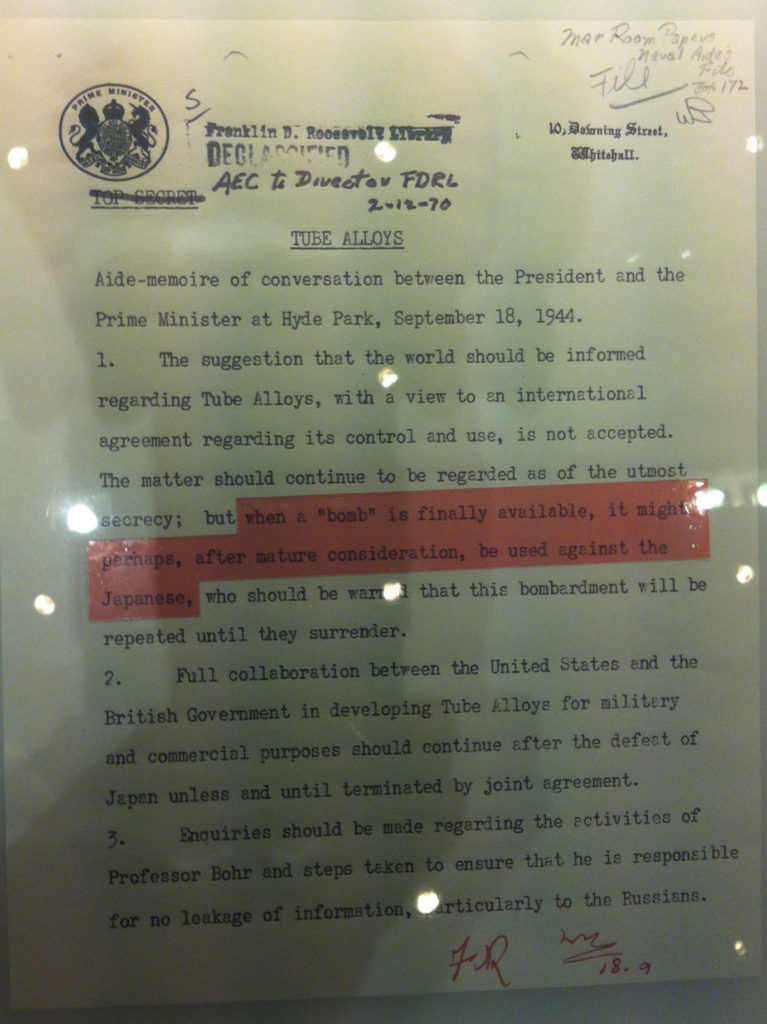
A memorandum from the Office of War Mobilisation dated 3 March 1945 to the President concerning the Manhattan Project (which created the bomb) stated in part “I understand that the expenditures for the Manhattan project are approaching 2 billion dollars with no definite assurance yet of production. We have succeeded to date in obtaining the cooperation of Congressional Committees in secret hearings …However if the project proves a failure, it will then be subject to relentless investigation and criticism …“
On 6 March a note to the Secretary of War was attached: “I think you should read this. Please speak to me about it at your convenience. F.D.R.” Franklin Roosevelt had only a little more than a month to live.
The figure of 2 billion dollars is astonishing.
On 6 June 1945 Henry Stimson, the Secretary of War, records in his diary a conversation with the new President (Harry Truman), in which Stimson expresses his concerns on two accounts: about the bombing being inflicted on Japan “because I did not want the United States to have the reputation of outdoing Hitler in atrocities“; and because he was “a little fearful that the Air Force might have Japan so thoroughly bombed out that the new weapon would not have a fair background to show its strength.“

Some of the scientists involved had grave reservations about the work in which they were engaged and as the reality of the use of their work approached they wrote to decision makers seeking to persuade them that the weapon should not first be dropped on a populated area. They warned that it would only be a few years before other nations acquired the weapon.
Unless an effective international control of nuclear explosives is instituted, a race for nuclear armaments is certain to ensue following the first revelation of our possession of nuclear armaments to the world.
Eucalyptus trees have a mysterious quality. Their leaves contain oils which hasten the spread of forest fires. Their bark however will often protect them from those fires and they regenerate after fire. It is only after fire has cleared undergrowth that they drop their seeds and new life begins.
The city of Hiroshima is now a flourishing and full of human life. It’s beautiful people living in peace and recalling the events of 1945 that marked a nadir of human history. They have dedicated themselves to standing as a symbol of peace and calling for the abolition of nuclear weapons.
There is a visitors book at the exit to the Hiroshima Peace Memorial. These are the words left by one visitor:
A very humbling experience, to witness the reality of war and aggression. It is a reminder that, though oceans and nations divide us, we are all one race and should care for one another. … – USA.
The information and documents made available to the public by the Hiroshima Peace Memorial have been drawn on in preparing the content of this article.
Image Credits
Atomic Bombing 8.15 am 6 August 1945 By Takasunrise0921 – Takasunrise0921, CC BY 2.5, https://commons.wikimedia.org/w/index.php?curid=1180462
Other images taken by the author during a visit to Hiroshima.


